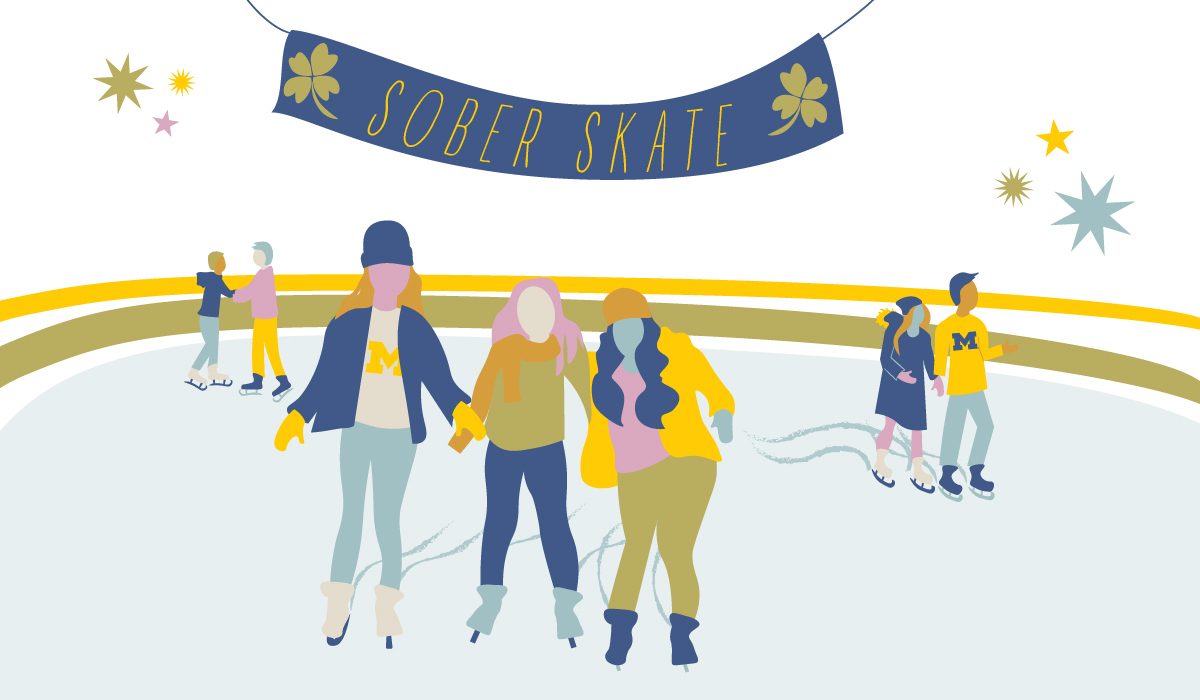In 2012, Bridget Russo was a New York City public relations executive with nearly two decades of experience promoting a who’s who of fashion and lifestyle brands. Then, she fell in with a scrappy new watchmaker called Shinola—and within months, she found herself moving to Detroit to serve as the company’s chief marketing officer.
“A lot of people thought I was crazy,” she confessed to U-M alumni who had crowded into the coffeehouse of Ann Arbor’s sleek Shinola store. They had gathered for the inaugural event in the Alumni Association professional development series, the “Leaders of Industry Series.”
It was the brand’s story—a story of bringing jobs back to Detroit and creating beautiful objects in an iconic American city—that snagged her. Russo referred to her five years of rapid brand building as “a tremendous rollercoaster ride.” After all, when it’s done right, brand building is all about telling a story that resonates. That’s as true for Shinola’s eclectic, expanding product line as it is for entrepreneurs seeking investors for their startup and fresh U-M grads looking to establish their own personal brands.
Russo, who recently stepped down from her position at Shinola, offered the attendees the following brand building advice.
Keep people at the center of your story. Shinola’s products might be impeccably designed, but their aesthetic appeal is not the only reason for the company’s success. “It’s the people making the product,” Russo said. Shinola’s narrative, about the resilience of Detroit’s workforce and the care its employees take in creating its products, is what has allowed the company to expand so quickly. Since launching in 2012, Shinola, as of press time, had more than 640 employees and 26 stores globally. And even as the company expands, Shinola’s marketing team has worked hard to keep the brand’s story focused on the people of Detroit.
Take advantage of technology to reach your audience where they are. Typically, when a company launches a new product, trade shows and retailers get the first look at it. Shinola goes directly to consumers, sharing designs and soliciting opinions on social media long before the product is available in stores. That has allowed the company to generate buzz and build a following from the ground up. “We’ve been very lucky with people recognizing or falling in love with the brand early on,” Russo said.
Know your consumer—and understand their value to your brand. When Shinola launched, the company positioned itself as “casual luxury.” But as they began to collect and analyze data, Russo and her team realized the brand was attracting a different sort of consumer. The typical luxury fan may happily lay down cash for logos or trendiness, but for those who were spending $700 on a Shinola watch, it was what Russo called a “considered purchase.” The choice was not frivolous or impulsive, and in fact buying the watch may have required setting aside money from multiple paychecks. “When it’s such a considered purchase,” said Russo, “and it’s not just this fashion throwaway thing, you have an inherent brand ambassador in that person.”
Take advantage of opportunities to work with micro-influencers. Shinola has its share of celebrity pitchmen—among them are the actor Luke Wilson and the rock legend Alice Cooper. However, Russo warned marketers not to ignore so-called micro-influencers. These niche bloggers, YouTube stars, and popular Instagrammers can lend their own hard-won credibility to a brand, generating content around your products and building on your story to help you reach new audiences.
For branding, consistency is key. Shinola now makes watches, bicycles, turntables, bags, wallets, high-end journals, pens, and jewelry. The collection of product lines has little in common beyond simple, solid design and an appeal that predates modern high-tech fixations. But even as the company announces new ventures—next up, a hotel—the marketing team keeps its sights on Shinola’s “north star,” the story that lies at the heart of its relationships with its customers and workforce. “ sure your north star doesn’t switch too much,” Russo said. “If it’s about workforce development and job creation, then that’s what it’s about.”
Marketing is a service. A marketing team should work in partnership with the rest of the company, Russo said, working to serve other teams—retail, ecommerce, wholesale—as well as the brand itself. And for a chief marketing officer, it’s important to make sure all your employees understand this mission. “Make sure it’s clear what the goals are,” she said, so employees can ask themselves, “What are we trying to reach and how can I impact that in a positive way?”
Go online to view the entire event.





